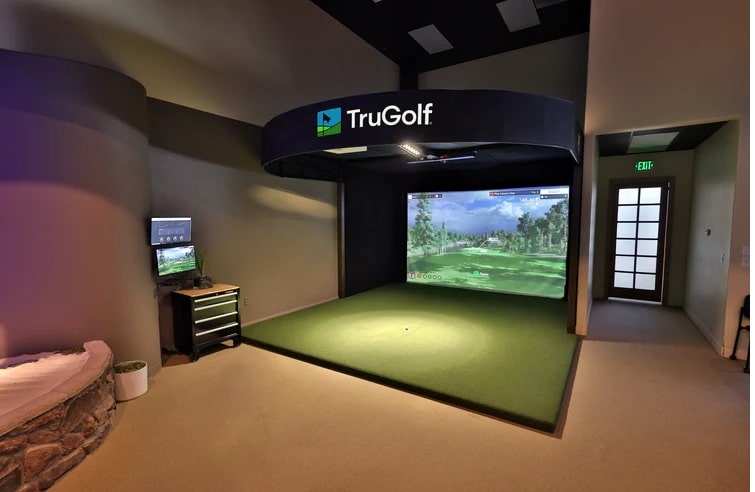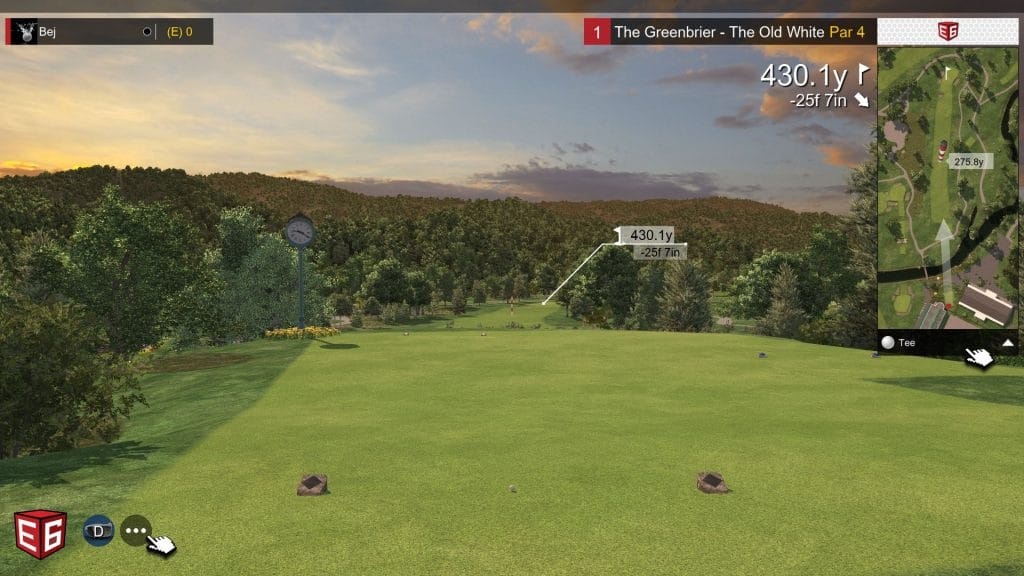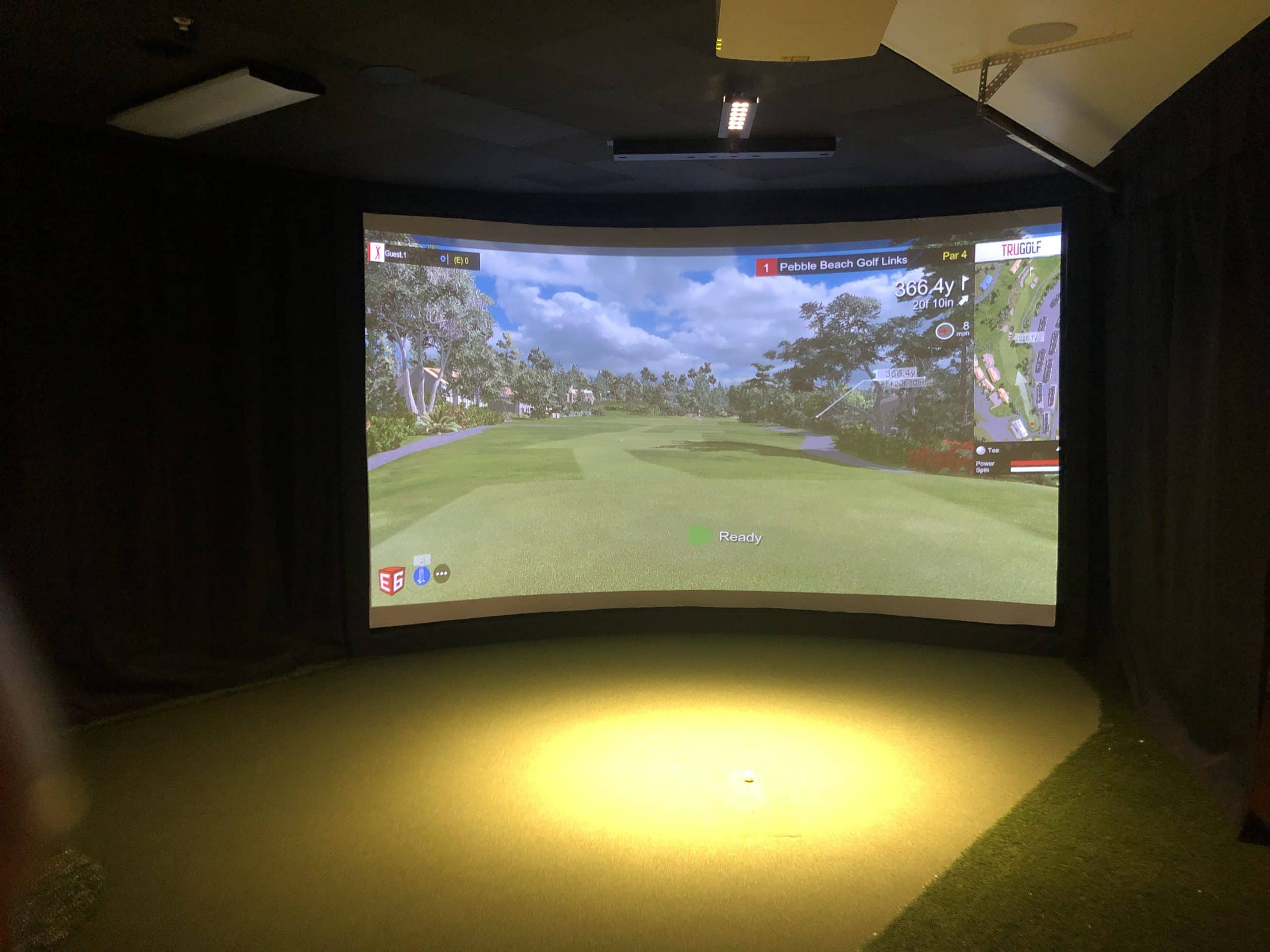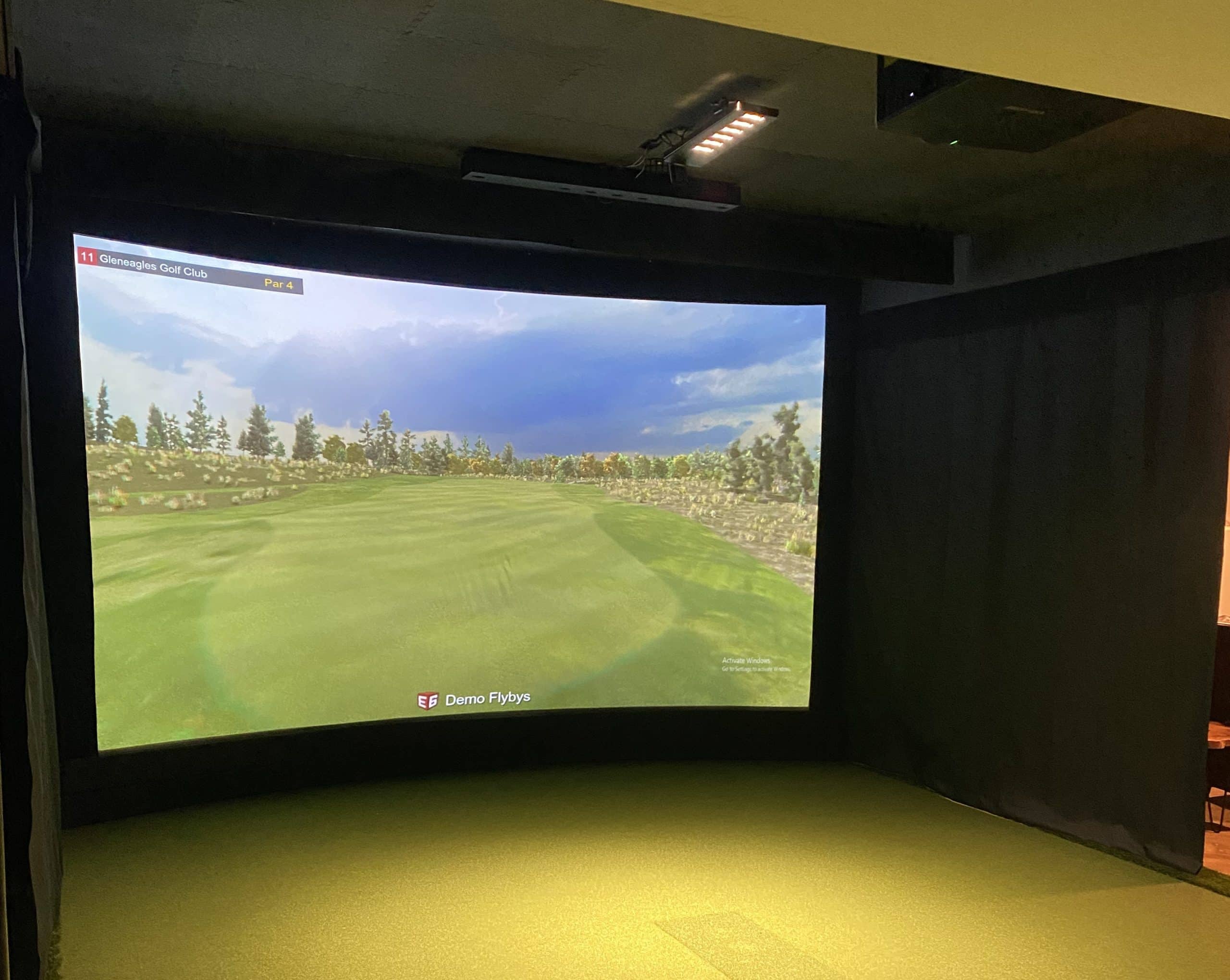You'll need an Intel i5 processor, 8GB of RAM, and a GTX 1070 graphics card to run E6 Connect smoothly at 1080p with consistent 60+ fps performance. While the official minimum specs list lower requirements, they won't deliver the smooth gameplay most golfers expect. The GTX 1070 remains the gold standard, though budget alternatives like the RX 580 work well too. Don't forget 25GB storage space and Windows 10 64-bit for ideal compatibility and performance observations ahead.

When you're choosing between an Intel i5 and i7 processor for E6 Connect, the performance gap comes down to three key areas that'll directly impact your golf simulation experience.
First, you'll notice threading differences; the i7-13700K handles 16 threads versus the i5-13600K's 14 threads. This means smoother multitasking when you're running E6 Connect alongside other programs. Second, the i7 delivers 22-24% better multi-core performance in benchmarks, which helps with course rendering and physics calculations. The processor must handle real-time processing of swing data and ball physics, making multi-core efficiency crucial for maintaining smooth gameplay.
Here's the thing: single-core performance only differs by about 6%, so basic gameplay feels similar. However, the i7's higher clock speeds (up to 4.7GHz versus 4.2GHz) and larger cache provide better frame rates during graphically intensive moments. The i7's larger cache allows for quicker data access during intensive golf simulation scenarios. Both processors require robust cooling solutions due to their 253W maximum turbo power for the i7 and 181W for the i5. For casual golfers, an i5 offers solid value, but serious sim enthusiasts benefit from the i7's extra horsepower.

Your processor choice sets the foundation, but RAM determines how smoothly everything actually runs during gameplay. E6 Connect officially recommends 8GB as the minimum, and here's why that number hits the sweet spot perfectly.
With 8GB, you'll get consistent frame rates at 1080p and 1440p without those annoying stutters that ruin your swing timing. The game loads textures and handles ball flight calculations seamlessly while managing background networking tasks. Drop down to 4GB? You're asking for crashes and frustrating lag spikes.
Sure, 16GB users report rock-solid performance, but 8GB handles E6 Connect's moderate graphics demands just fine. Even older hardware like Intel i7-2600 processors paired with adequate RAM can deliver stable performance without issues. Standard DDR4 speeds work great; you don't need expensive high-frequency modules. Think of 8GB as your cost-effective baseline that delivers smooth gameplay without breaking the bank.
Since E6 Connect requires an internet connection for full functionality, your RAM also handles the constant data exchanges with online servers during multiplayer sessions and course downloads. The software's 4K compatibility means higher resolution displays will push your system harder, making adequate RAM even more critical for maintaining those detailed course visuals without performance drops.
While the GTX 1070 might seem like yesterday's news, it remains the gold standard for E6 Connect performance, delivering smooth 60+ fps at 1080p without breaking a sweat. The point is: this Pascal powerhouse packs 8GB of VRAM and 1920 CUDA cores, giving you plenty of headroom for golf simulation graphics.
But let's talk budget alternatives. The RX 580 runs about 15% slower than the GTX 1070 but costs considerably less on the used market. You'll also find the GTX 1660 Super offering comparable performance with better power efficiency. Even the older GTX 1060 6GB handles E6 Connect beautifully at 1080p. For comparison, a complete SkyTrak simulator setup with projection costs $5,500-$7,500, making a solid graphics card investment seem relatively modest.
The sweet spot? Hunt for used GTX 1070s, they're competitively priced and still crush modern games when you need a break from perfecting your swing! You can typically find functioning GTX 1070 cards in the $50 to $80 range on local marketplaces like Craigslist or Facebook Marketplace. The GTX 1070 Gaming X 8G excels at 1440P gaming while maintaining excellent temperature control and quiet operation.

Graphics cards grab all the spotlight, but storage space quietly makes or breaks your E6 Connect experience. You'll need 25GB minimum, though that's cutting it close. The reality is, while E6 Connect runs on traditional hard drives, you're setting yourself up for frustration. SSDs elevate your gameplay with faster course loading and smoother asset streaming.
Think of it this way: a slow HDD turns those gorgeous golf courses into stuttering slideshow presentations. Meanwhile, an SSD keeps everything flowing naturally. I'd recommend grabbing at least 50GB free space on an SSD to handle future updates and cached data without stress. Keep in mind that E6 Connect's software subscription runs around $600 yearly for expanded plans, so protecting that investment with proper storage makes sense.
Your drive choice impacts everything from startup times to mid-swing responsiveness, so don't cheap out here! The software's 4K compatibility demands sufficient storage performance to handle high-resolution textures and detailed course environments. For optimal performance, ensure you have USB ports available for any external gaming devices or controllers you plan to use.
Beyond hardware specs, E6 Connect won't even launch without the right operating system base. You'll need Windows 10 64-bit edition at a minimum, no exceptions. The key point is: 32-bit versions and older Windows editions simply won't work, period.
Your system must support DirectX 11, which means keeping those graphics drivers updated through Windows 10's automatic updates. You'll also need at least 25GB of free disk space for installation, plus a stable internet connection for activation and online features.
Don't overlook the software dependencies! Microsoft Visual C++ Redistributables and .NET components come pre-installed on most Windows 10 systems, but they're absolutely crucial for E6 Connect's core functions. Windows Firewall might need tweaking to allow the game's network traffic too.
E6 Connect's annual subscription typically runs between $300 to $600, making it a mid-range investment compared to other golf simulator software options on the market.
Once you crank up your display resolution, your graphics card suddenly has millions more pixels to push around every single frame. At 720p, you're dealing with roughly 900,000 pixels, but jump to 4K and that number explodes to over 8 million! The reality is: E6 Connect doesn't need blazing frame rates like competitive shooters, but those detailed grass textures and smooth ball flights still demand serious GPU muscle.
You'll want a GTX 1070 or RX 580 with 4GB VRAM for solid 1080p performance. Planning to go 4K? Better bump that up to 6GB VRAM or more. Your CPU requirements stay the same regardless; an Intel i5 handles the workload just fine. The minimum specifications call for an nVidia GTX 460 for desktop systems, though this baseline won't deliver optimal performance at higher resolutions. Unlike launch monitors, where FlightScope Mevo+ includes an E6 Connect license with 10 courses at no extra subscription cost, the software itself requires adequate hardware to run smoothly. The smart move? Match your resolution to your hardware capabilities rather than chasing ultra-high settings that'll stutter.

Yes, E6 Connect runs great on laptops, especially gaming ones! You'll need an Intel i5 processor, 8GB RAM, and a dedicated GPU like Nvidia 1070 or better. Gaming laptops are perfect since they typically exceed these specs with i7 processors and 16GB+ RAM. Regular ultrabooks won't work because their integrated graphics can't handle the DirectX 11 requirements for smooth gameplay.
E6 Connect doesn't officially support multiple monitors, but you can still make it work! Your gaming-grade GPU (like an Nvidia 1070 or RX 580) handles multiple displays through Windows settings, not the software itself. You'll get the main game on one screen while using E6's web portal on another device for stats and controls. It's more of a workaround than true multi-monitor gaming.
You'll want to contemplate TruGolf simulators since they actually developed E6 Connect, giving you seamless integration. Tittle's another solid choice—just select them during E6's installation process. GolfTrak works great with E6 Connect's 5-course simulator too. The key's making sure your simulator supports DirectX 11 GPUs like Nvidia GTX 1070 or AMD RX580. Most projector-compatible brands handle E6 Connect well across different resolutions.
You'll need at least 25 Mbps download speeds for E6 Connect's online features to work smoothly. The fact of the matter is—while gameplay itself uses modest bandwidth, downloading courses and updates requires serious speed since files are massive. For multiplayer sessions, aim for upload speeds above 10 Mbps and keep ping under 100ms. A wired connection beats WiFi every time for consistent performance!
DirectX 11 is absolutely mandatory—you can't get around it. Older versions like DirectX 9 or 10 won't work and will likely cause crashes or prevent E6 Connect from launching entirely. The software specifically requires DirectX 11's advanced features for proper rendering and performance. Your GPU needs native DirectX 11 support, which comes standard with cards like the GTX 1070 or newer equivalents.
You've got the blueprint for smooth E6 Connect gaming! Your Intel i5 processor paired with 8GB RAM will handle most situations beautifully. Don't stress about getting the absolute latest graphics card; that GTX 1070 still delivers solid performance. Make sure you've got enough storage space and Windows 10 running smoothly. Remember, these specs aren't just minimums that barely work; they're the sweet spot for consistent, enjoyable gameplay without breaking your budget.